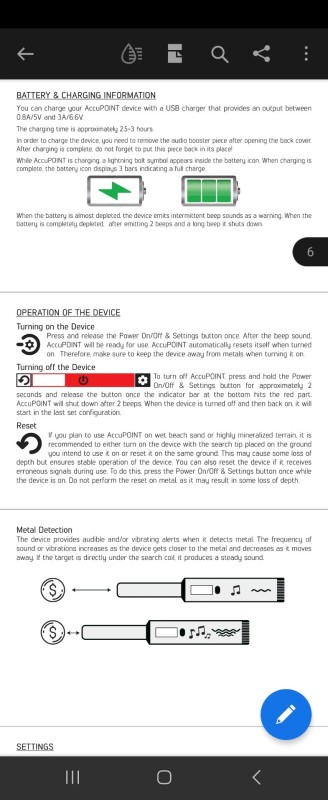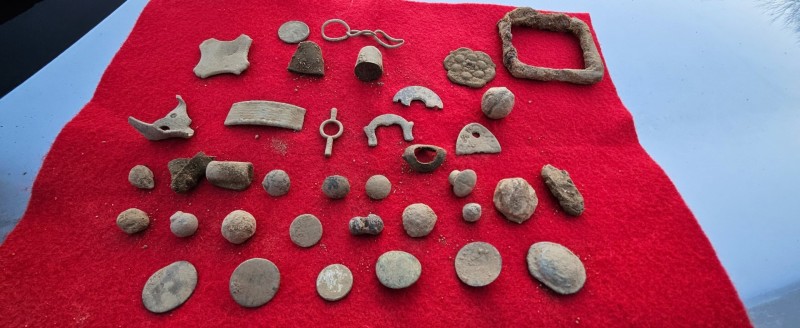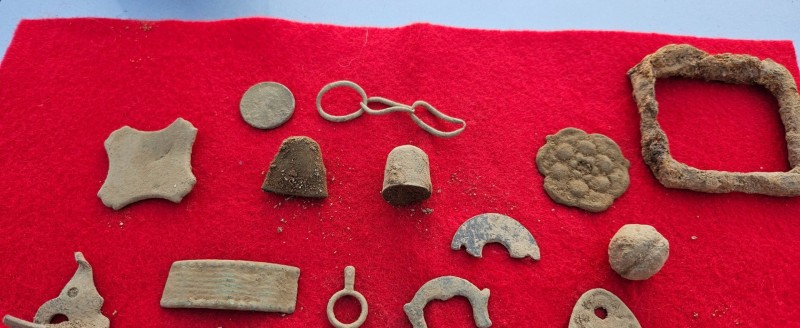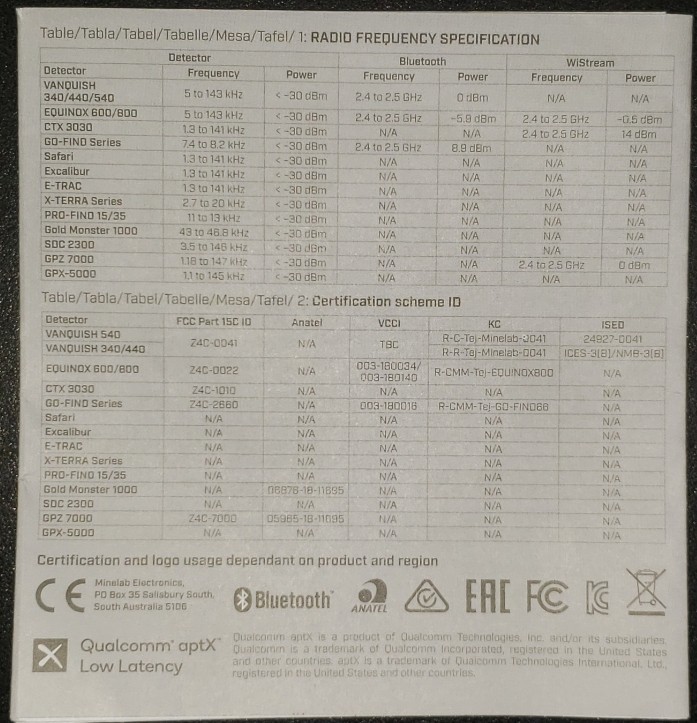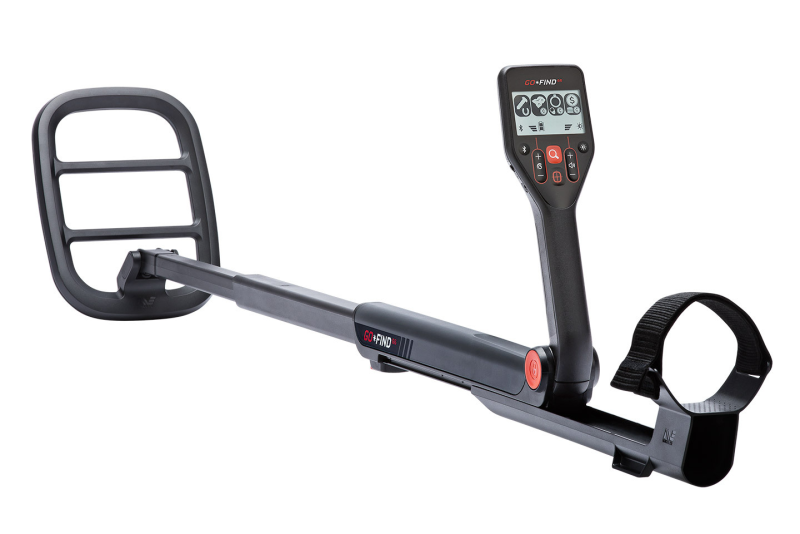-
Posts
6,115 -
Joined
-
Last visited
-
Days Won
32
Content Type
Forums
Detector Prospector Home
Detector Database
Downloads
Everything posted by Chase Goldman
-

D2 Scores More Great Finds
Chase Goldman replied to F350Platinum's topic in Metal Detecting For Coins & Relics
Yowza. You are right, Chuck!- 39 replies
-
- relic detecting
- relic found
-
(and 1 more)
Tagged with:
-

D2 Scores More Great Finds
Chase Goldman replied to F350Platinum's topic in Metal Detecting For Coins & Relics
I’ve collected coins since I was 10 years old and have enjoyed learning about military history from that age, as well. So to be totally honest, finding old coins or specific military artifacts in my mind is practically always going to overshadow generic relic finds, regardless of provenance. I’ve done archeological digs where the archeologist gets excited about the type of square nail I’ve dug or a chunk of iron like a piece of hardware from a threshing machine, that reveals context of what was going on at a site. But I tell you what, if someone recovers a coin or a US military relic everyone (all the archeologists) come a running to see it like we just recovered the Ark of the Covenant. I think the reason for this is because coins have a date and they were minted from what was generally considered the most precious metals at the time. Similarly, military artifacts readily point to specific time periods of historic significance. There’s something about finding an old coin or military artifact at a relic site that makes a hunt seem more complete to me regardless of all the other incredible relics I’ve dug that day. There’s always a twinge of disappointment when I am personally unable to pop an old coin from any historic site, especially one that has obviously not been hit previously - it's an extremely rare opportunity for me be somewhere where old coins can actually be recovered. So for better or worse, I look at it as a missed opportunity because the coins, if they are there, disappear pretty quickly, thereafter. So I will have to live vicariously through you this time, Bob. Congrats again and thanks for giving me the opportunity to dig history and I'm sure there is a coin or two still hiding there in all that iron, but wow, a pre-1800 US coin, that's rarified air. Like I said, I was happy with what I did dig and it's always fun to be digging a lot of keeper targets. Probably the first time I dug two thimbles in the same day and I do have to figure out the interlocking brass ringlets. And the beauty of the countryside in your neck of the woods makes for a scenic and relaxing drive.- 39 replies
-
- relic detecting
- relic found
-
(and 1 more)
Tagged with:
-

D2 Scores More Great Finds
Chase Goldman replied to F350Platinum's topic in Metal Detecting For Coins & Relics
Not quite as much fun as you as I did not score any epic 1700's US coins or silver this time out (Congrats Mr. G), but it was an epic hunt nevertheless and was happy with my finds. Probably my most productive day since we first hit that farm last winter. Nothing like doing the research and finding that second home site we knew was there somewhere. We waited a long time to be able to get out there and hit this side of farm and it paid off. Now to solve the next mystery at that site. Looking forward to further exploration adventures there now that we blazed our shortcut back out of the woods. Thanks again for the great digs. Let's do it again, and again and...- 39 replies
-
- relic detecting
- relic found
-
(and 1 more)
Tagged with:
-

A Funny Thing Happened On The Way To The Forum
Chase Goldman replied to F350Platinum's topic in XP Deus II Forum
Heck, I would have been happy if they switched to USB-C as we're two generations of USB connectors behind at this point. Anyway, a sealed multifunction port is basically a necessity, because while its true land and shallow water hunters do not use the BH-1 phones much, the remote is set up and advertised to be 20 meter dive capable so a DIN connector is all but required to provide that capability for the requisite wired phones. That means they would also have to make room for a separate magnetic charge and data port on a remote (as that can't be used for audio submerged) with a very small footprint to provide magnetic charging and data which is really a waste of real estate. -
Welcome, MLB. You've already generated a lot of good discussion with your Legend coil post, so thanks for contributing.
-
The coverage is actually less for the butterfly coil dimensions you provided (8" swing coverage vs. 9.5" swing coverage for the LG24). Can't speak to depth, but the LG coils seem to perform pretty well in general and price-wise, are a great value compared to their competition. Of all the latest Simultaneous Multi-frequency detectors on the market right now (Legend, Equinox, Manticore, Deus 2, Quest V series and Apex), I have only seen third party coils for Equinox, so far (from Coiltek). I am thinking the multifrequency presents a challenge for 3rd coil manufacturers unless there is close collaboration between the detector manufacturer and the third party coil manufacturers, so if you are looking third party coils for Legend and these other SMF detectors you may be in for a long wait.
-

Buttons Of Xp Deus 2 Remote Controller Very Hard To Push!
Chase Goldman replied to detector's topic in XP Deus II Forum
That was true of the Deus 1 controller, but the I've considered the D2 a vast improvement and have not heard complaints. They do not have much give, but they should be very responsive to a reasonable amount of applied force. You may have a problem with your controller if it is really too hard for you to operate or are not getting a response to your button presses. Have you been able to turn the controller on? -
Just to clarify and inform: Bluetooth DOES support multipoint operation (operation with multiple devices) but it has to be enabled by the firmware in the device. The Legend Headphones DO have this feature that is how the headphones are able to connect to both the Legend detector AND the Accupoint pinpointer. Garrett's Z-Lynk is similar to bluetooth but uses proprietary software. It is NOT WiFi. Proprietary wireless detector audio is also used by Quest and Minelab. Minelab did use low latency Bluetooth for Equinox 600/800, Vanquish, and the GPX 6000 but abandoned it in favor of a proprietary variant of Bluetooth LE (Low Energy) in the Manticore, Equinox 700/900, and the X-Terra Pro.
-

Equinox 600 Vs Fisher F44 & F70
Chase Goldman replied to michaelgolden's topic in Metal Detector Advice & Comparisons
OK. Not sure what those numbers really mean but I get the idea. I guess I look at it a little differently and of course this is all more subjective than scientific. This is a guess, but I think today's stock coils can get the job done in more than 90% of the detecting situations that are suited to the capabilities of any particular detector. A gold-focused detector will typically be accompanied with an appropriate gold focused coil (small and highly sensitive to tiny gold targets) and the latest and greatest class of SMF/selectable single frequency detectors (Equinox, Legend, Deus 2, Manticore, etc.) come with decent general purpose coils. Of course using the wrong coil for the job will certainly hinder your ability to recover desired targets in certain situations (e.g., using a coil too small for the typical target depths in the area of interest or using a coil too large for hot soils or micro targets) but I think using a middle of the road (stock) coil will likely only marginally affect your results vs. using the optimal coil. Ask Manticore users who have been forced to use only the stock coil for nearly a year. But I think equipment, ironically, comes in last overall in the list of factors that determine success or enjoyment in detecting. Location and site conditions alway trump experience, skill, and least of all equipment. A great site with good soil, little trash always makes for a great experience for the new detectorist who at least knows the basics on how to use their detector and recover the targets. That's why people should spend more time learning how to research and gain access to great sites than they do fretting about the capabilities of their equipment. IMO. (I know, blasphemy). -

Equinox 600 Vs Fisher F44 & F70
Chase Goldman replied to michaelgolden's topic in Metal Detector Advice & Comparisons
Just responded because you kept referring to it as if it were relevant to your earlier statement that FCC regs are somehow limiting detector performance and development and the myth has a life of its own, you are not the only one but simply the latest one to resurrect it. Getting the technical truth out there was also not about bashing you or anyone else. It's about educating folks (anyone who comes here to learn and share) so they can be better detectorists. Again, you posted something as technical fact. You were right about the regulation but not how it impacted or applied to detectors. It not a requirement that you know how the tool works but it certainly doesn't hurt. I agree that sarcasm just ratchets up the vitriol, and tried to avoid it. Regardless, setting the record straight with clarity and facts does not warrant attacks and name calling in reply... -

Equinox 600 Vs Fisher F44 & F70
Chase Goldman replied to michaelgolden's topic in Metal Detector Advice & Comparisons
Again, as Jeff pointed out by professional metal detector designer Carl Moreland (he's cowritten several books on the subject and has been employed as a lead design engineer by at least two major US metal detector manufacturers) that limit does apply to the metal detector electromagnetic field power emitted by the coil (at frequencies above 9 khz) but the coils don't come anywhere close to that limit regardless of frequency. Carl Moreland in response to a question on why metal detector manufacturers don't advertise the power output of metal detector transmit coils: "Because it's a meaningless number. A metal detector develops an alternating magnetic field by putting an alternating current through a coil of wire. Ideally, there is no "power" because inductors don't dissipate power, and there is no signal "transmitted" as with a radio. There is power consumed by the transmit circuitry, but that depends on the design of the circuit. If I resonate the transmit coil my power consumption drops significantly, but the magnetic field can be the same strength as an inefficient circuit that only sucks down more battery current. Would you pay extra for a less efficient design just because it has a higher "power" output?" This quote makes me smile when I think about all the ridiculous hoopla surrounding ML's claims of 50% more power to the coil. Anyway...the key here is contrary to popular belief, a metal detector is NOT a radio transmitter. The 5 watt limit does apply to some unlicensed personal communications devices (GMRS, FRS, CB and other similar radio transmitters IN THE US only). As we know, metal detectors only available outside of the US do not perform appreciably better than those sold in the US that have to comply with FCC regs. That's because physics not arbitrary power limits in the US or elsewhere are determining the highest practical coil power limits. Metal detector manufacturers do also have to meet US and European and other international power regulations for the wireless BT and similar radios embedded in their detectors to provide wireless audio transmission, but again, this has no impact on coil transmission power or emissions. That's why you see FCC and European compliance documentation associated with metal detectors. They also have to specify the power output in dBm across the frequency spectrum for which they transmit. Some confuse these radio certifications with coil output power compliance (See example data sheet from the Minelab, below). To put those numbers in perspective: 0 dBm = 0.001 watt 8.9 dBm (the power output of the GoFind BT radio) = 0.008 watt and -30dBm, the total transmit coil spectrum power ALL Minelab detectors remain below is 0.000001 watt. None of these are anywhere close to the 5 watt FCC limit. So you could increase the coil output power by a factor of 5 million and still not exceed the 5 watt limit. Finally, present battery technology and efficiencies are not limiting detector output power nor does it have anything to do with FCC limits, either. Batteries are limiting continuous run time, but with run times exceeding 10 to 12 continuous hours or more, they are not really practically hindering anything. So hopefully, this myth is pretty much busted. (But something tells me we won't hear the last of it, unfortunately)... Anyway, hope you bag one out there. Enjoy your hunt... -

Equinox 600 Vs Fisher F44 & F70
Chase Goldman replied to michaelgolden's topic in Metal Detector Advice & Comparisons
Yes. It's 100% only when you have the target in hand. -

New Wm09 Wireless For Manticore & Eqx 700/900?
Chase Goldman replied to jasong's topic in Minelab Metal Detectors
Dream on... -

Equinox 600 Vs Fisher F44 & F70
Chase Goldman replied to michaelgolden's topic in Metal Detector Advice & Comparisons
You are correct that induction balance detectors depth capabilities have basically plateaued but it has nothing to do with FCC restrictions or transmit power limitations because even the most powerful PI or Multifrequency detector comes nowhere close to exceeding any FCC power limitations. Depth, at this point, is solely limited by limits of the physical principles under which the induction balance detectors work and the abilities of the digital signal processors to tease out information from the weak induced magnetic signals from the targets. I have a Tarsacci and have used it in the hellish mineralized soil in the fields near Culpeper Virginia. It is indeed deep for a non-PI detector on relic targets and will give you a good idea if your target is ferrous or non-ferrous but that's about it. It's target ID processing is highly unstable in mineralized soil and its limited audio makes it basically unusable other than on a salt beach or if you just want to differentiate ferrous from non-ferrous. Forget about using it in an environment with multiple non-ferrous junk targets like can slaw or pulltabs. While not quite as deep as the Tarsacci in hot soil, the Deus 2 has a much more stable ID and far superior audio and I have had more success with it than the Tarsacci under similar conditions despite the Tarsacci's slight depth advantage. Of course, in Culpeper the Pulse Induction machine is the preferred choice for maximum depth under such soil conditions, but there are plenty of situations where the Deus 2 will outperform a PI (machine gun iron or thick modern trash) simply because the undesirable target field density overwhelms the machine. Anyway, thanks for chiming in. Spend some time perusing what has been posted on the site and you'll find that the experienced folks here, like Jeff McClendon, understand that the machine is not the end-all and be-all when it comes to detecting. Number one is location (if you are on a site with no desirable targets, even Harry Potter's magic wand can't help you). No matter what detector you have, the best thing you can do is learn it inside and out, understand its limitations as well as its strengths and then exploit the strengths and compensate for the limitations. A detector's depth capabilities used to be the centerpiece of a detector's worth. That is no longer the case today. As mentioned previously, induction balance detectors have basically reached the practical limit of their depth capability. Additional, technological advances in signal processing and coils will likely not provide further significant improvement. However, what has improved is signal processing speed and capability and refined and affordable simultaneous multiple frequency transmission schemes which has improved the ability to separate adjacent targets and to more accurately ID non-ferrous keepers amongst the ferrous and non-ferrous junk. Speed and versatility (ability to adjust capabilities on the fly and to be able to select either single or multifrequency as appropriate) of modern detectors give beginners and pros alike more tools in their detecting toolkit and, if utilized properly (see the second bullet above) the potential for better results than with legacy and new detectors lacking this versatility. Put another way, it's not a matter of whether multifrequency is better than single frequency - its being able to dial up either at the push of a button, as needed. -
Yep. You got that right. Any general purpose USB cable with a mini B plug should charge the coil, headphones, or Mi6.
-
Actually, you’ve got that sort of backwards. Besides being able to charge all D2 accessories (Remote, coils (except the new Xtreme hunter two-box which uses USB C), headphones, and the MI6), the D2 triple head cord is used to only update the D2 remote because it has required multifunction round screw-in barrel connector for the remote. The other two mini USB B connectors on the triple-head charge cable provide charge power only and lack data pin connections and can’t be used for updates to the headphones. In order to do updates to the headphones, you need the single USB mini B data/charge cable that was included in the D2 kit or, if you lost that, you need to get a third-party single USB cable with a mini B connector that has both power and the data pins connected or you can get an XP replacement single data/charge cable from an online shop that carries XP accessories. HTH
-
Yep. Just wondering how a Mono coil works in an induction balance design, but thanks to Carl, now I know as its not a traditional induction balance design. Now that I do know, and based on the how the GoFind circuit is set up to accommodate the balanced inductor, it makes me scratch my head on why anyone even bothered with the GoFind DD hack. It seems like so much trouble for a detector that was intentionally designed around the balanced inductor. It seems that the effectivity of the Mars coil would have been degraded in this approach to the point that it would just make more sense to get a purpose built detector for similar cost if the goal was improved performance. As far as I'm concerned, its another example of engineering for engineering's sake in the vein of "just because you can, doesn't necessarily mean you should". But as an engineer, I still think its cool they did it. As far as ML is concerned, it is also cool they pursued the GoFind as an actual product vs. just a proof of concept prototype. Even in this simplest of detectors, plenty of innovation from the unique balanced inductor approach, the compact, foldable form factor, and the accompanying phone app, it looks like ML put a few "out there" concepts into the real world to see whether it might catch on.
-
Thanks Carl, that puts that mystery to bed for me.
-

Garrett Axiom First Official Gold Prospecting Trip
Chase Goldman replied to Jeff McClendon's topic in Garrett Metal Detectors
That may be part of the reason. I am only running the DD's and a barely audible threshold to listen for breaks and small pertubations, it's definitely not just a reference threshold, but perhaps due to EMI or whatever, I can't run it out of the negative numbers without it blowing my ears off. But I am also not looking for subgram targets, though my setup should be able to accommodate subgram target detection since it was similar to what Steve articulated above. -
Would really like to see an X-ray of a Minelab Go Find coil, because externally it looks like a mono coil which is weird for an induction balance detector which uses a CW transmission coil and separate receive coil in either DD or coaxial configurations.
-

Garrett Axiom First Official Gold Prospecting Trip
Chase Goldman replied to Jeff McClendon's topic in Garrett Metal Detectors
Thanks for that explanation, Jeff. A continuous reference tone at that volume would have made my head explode regardless of ambient conditions, but it obviously did not affect your ability to recover micro targets. -

Garrett Axiom First Official Gold Prospecting Trip
Chase Goldman replied to Jeff McClendon's topic in Garrett Metal Detectors
We're you really running Threshold at 14, Jeff? That seems really high. Especially in light of Steve's post above. Even in really quiet conditions, I was dialing in Threshold at around -7 max during my most recent hot dirt Axiom relic hunt. -

New Minelab X-Terra Voyager
Chase Goldman replied to Steve Herschbach's topic in Minelab X-Terra Forum
Sunpow has a Concentric coil vs. the DD on the Voyager...interesting


